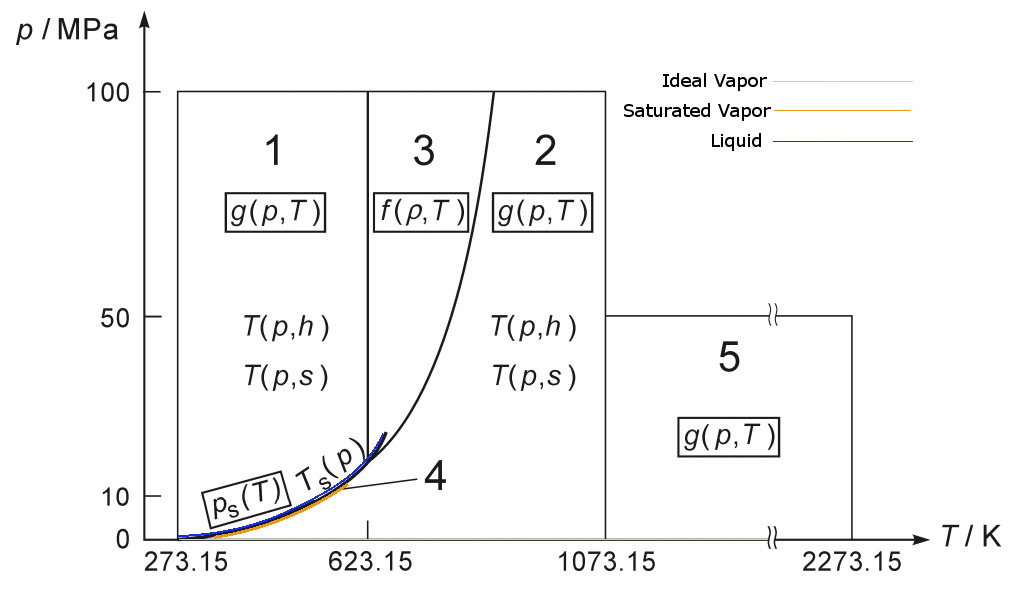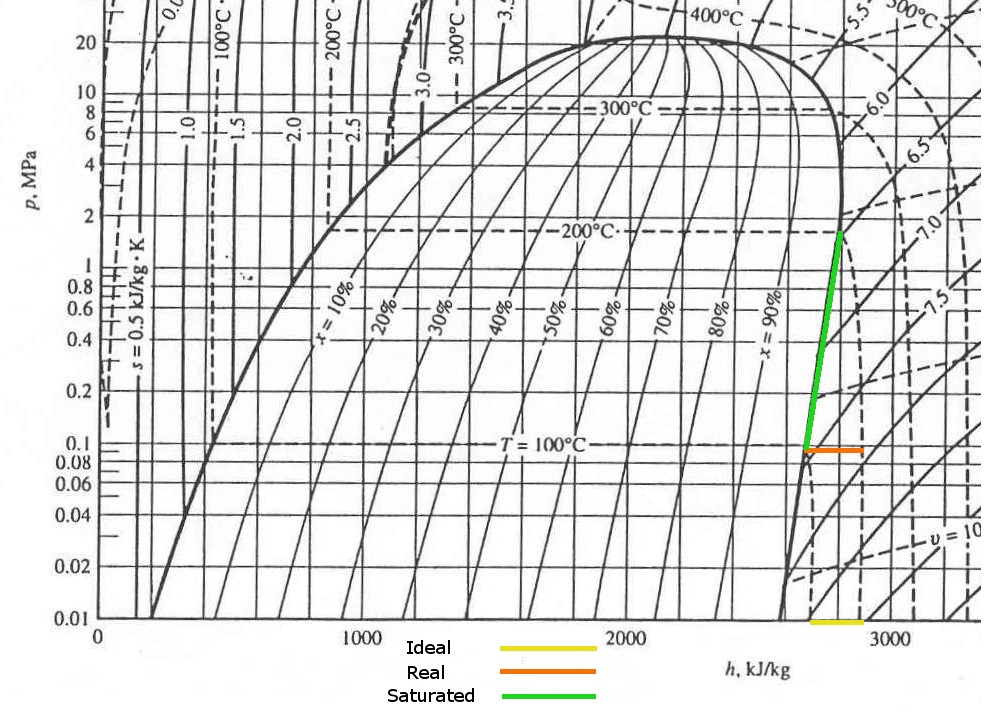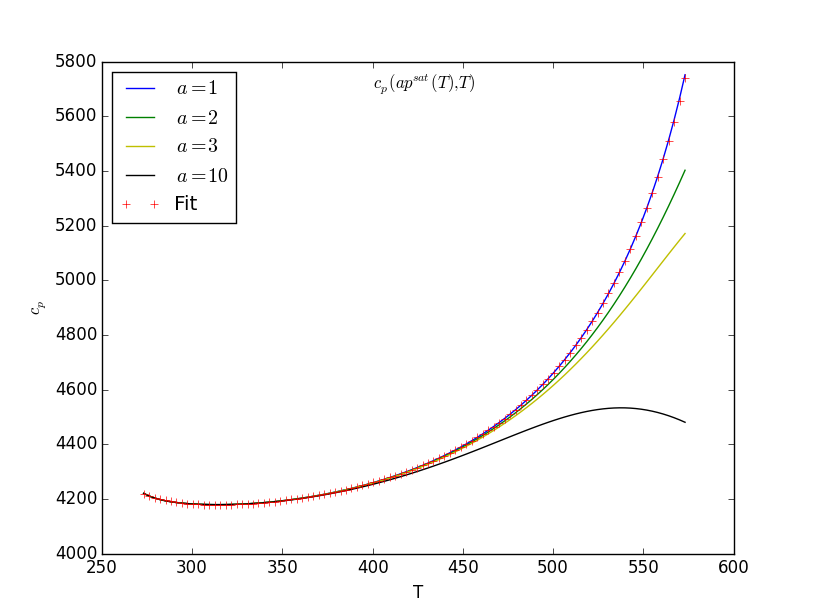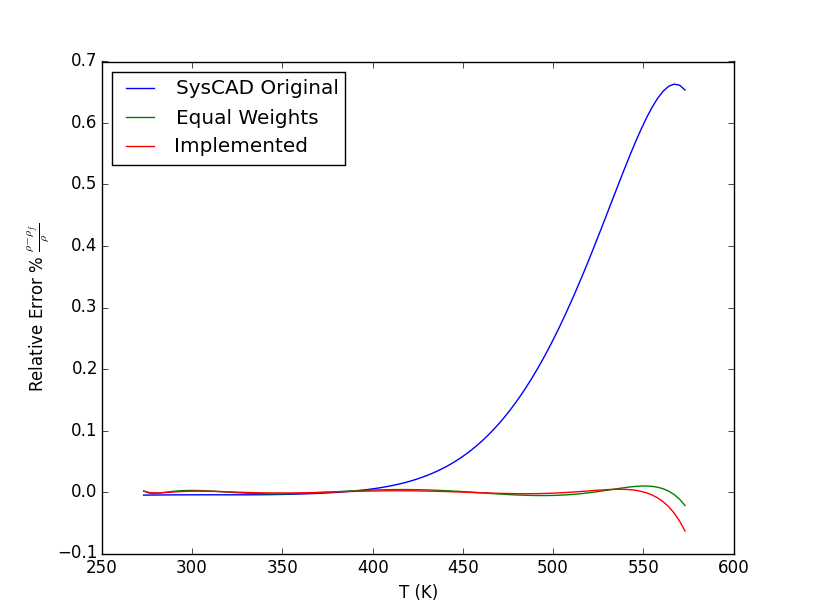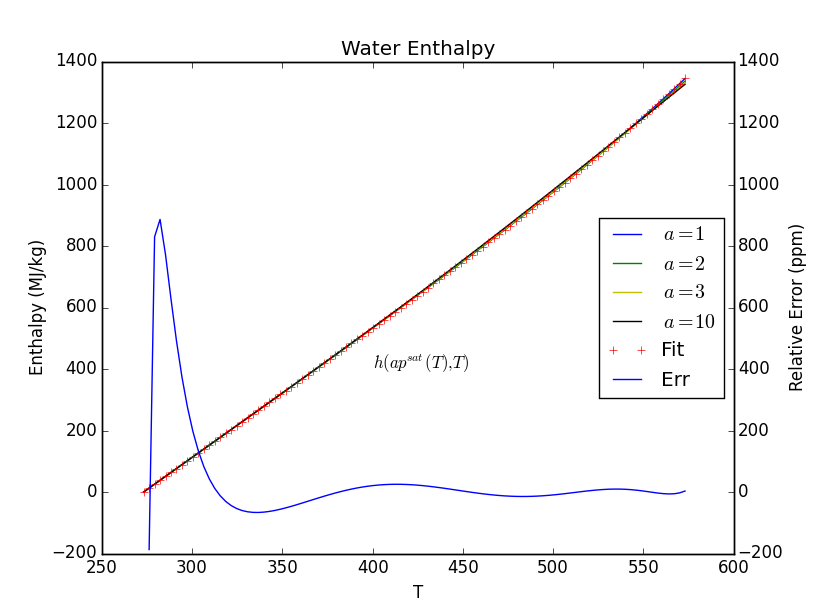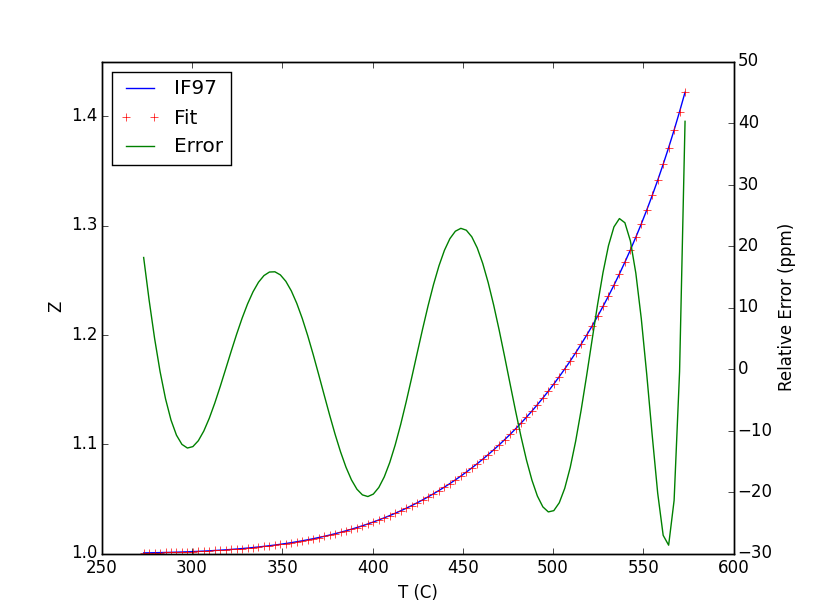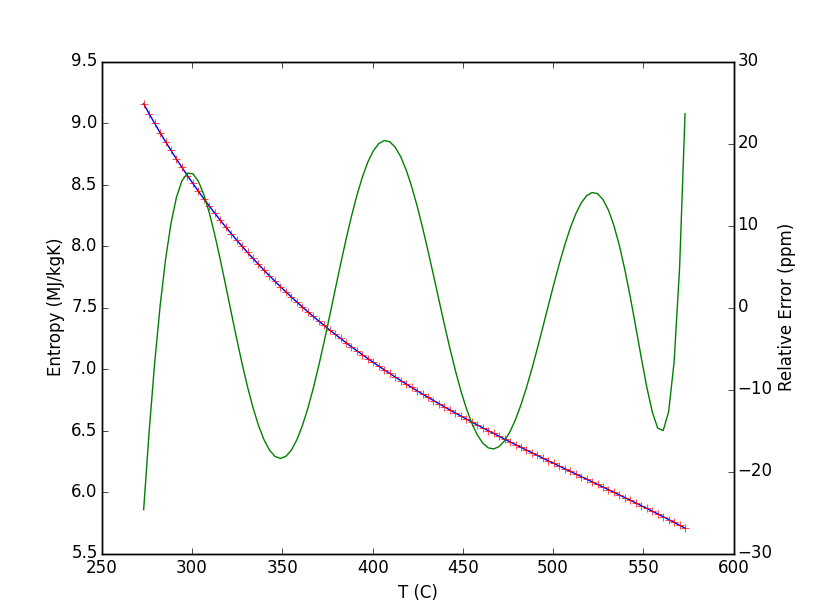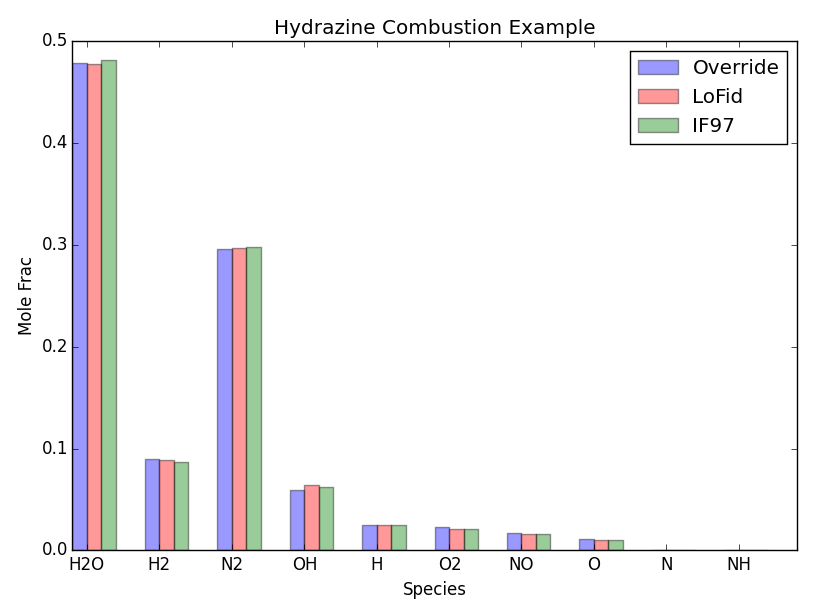Fast IF97 Sat Properties
Navigation: User Guide ➔ Stream Properties ➔ Fast IF97 Sat Properties
Related Links: Species Table, Standard Species Model, Plant Model - Species Property Overrides, Water and Steam Properties
Introduction
For many modelling scenarios, the full accuracy of the IF97 calculation is not required, and fast approximations will give adequate accuracy. For liquid water, the specific heat and density are practically independent of pressure, so we can use approximations that depend on temperature only. Similarly, for steam at low pressure and high temperature, the ideal gas approximation is often adequate for modelling purposes. Significant speedups can be obtained using the "fast approximation" models judiciously.
There are many correlations available for water and steam under these conditions, but often these do not match the actual IF97 data all that well. This could potentially cause issues when models are run under both full IF97 high fidelity and various low fidelity approximations.
For this purpose SysCAD includes "FastIF97Sat" correlations that match IF97 accurately. For models where temperatures and pressures are appropriate, the results should be close whether using the full IF97 model or the FastIF97Sat model, but with a significant speed improvement for the latter.
Using the "FastIF97Sat" correlations
The new correlations can be configured as default for a group of projects by editing the configuration file, or selected for a particular project in Plant Model on the Species tab page using Species Property Overrides.
- The original Low Fidelity models applicable for models where liquid and vapour are near saturation, such as flash tanks and evaporators. "Fast IF97 Sat"
- The new Low Fidelity models are suitable for low pressures and high temperatures. "Fast IF97 Ideal"
- Both models have the same correlation for the saturated liquid phase, but a different correlation for the vapour phase.
- If the model involves vapour near saturated conditions, then use the "Simple" (Fast IF97 Sat) model
- If the model involves high temperature vapours, use the "LowFid" (Fast IF97 Ideal) model
The use of the FastIF97Sat depends on your modeling requirements. It would be common to use FastIF97Sat for Water, but not necessarily for steam. FastIF97Sat correlations are particularly useful where a small loss in overall fidelity is admitted to gain a significant speedup.
IF97 Regions
For purposes of these models the correlations are done on the sections of the full p-T area shown here:
- Water conditions are along the saturation line [math]\displaystyle{ p = p_s(T) }[/math] up to the critical temperature
- Ideal Steam conditions are on the low pressure (ideal gas state)
- Saturated Steam conditions are along the saturation line up to 500K
The Ideal Steam model could be used for applications not involving flashing and phase change, for example Free Energy Minimization at atmospheric pressure and high temperatures.
The Saturated Steam model can be used for applications where vapour is nearly saturated and saturated liquid is also present, such as flash tanks and evaporators. This provides an accurate model for liquid and vapour enthalpy on the saturation line and specifically the latent heat of phase change [math]\displaystyle{ h_{fg} }[/math]
- Note that the Saturated Steam model has a very inaccurate value for specific heat [math]\displaystyle{ C_p }[/math], and actually correlates the change of enthalpy with temperature along the saturation line.
- [math]\displaystyle{ \frac{\partial H}{\partial T} |_{sat} }[/math]
- When this is integrated, it provides an accurate estimate of the saturation enthalpy. The following chart (p - h diagram for steam) shows the change in enthalpy from 100C to 200C for the three cases.
- Above 220°C, the vapour saturation enthalpy decreases with temperature, and the saturated steam model is invalid.
Summary of correlation
The "FastIF97Sat"low fidelity correlations include specific heat, enthalpy, entropy and density.
Liquid Water Correlations
Water Specific Heat
The fit matches the saturation specific heat as shown here. At higher pressure, and low temperature the saturation value is an excellent approximation for pressures up to ten times the saturation pressure, however the fit is not good for elevated pressures as the temperature approaches the critical temperature.
The actual error is generally less than 0.05% apart from near the critical point. (Any modelling for conditions near the critical temperature should probably be done with the full IF97 equations) This plot also shows the error for atmospheric pressure (rather than saturation pressure)
Water Density
Plots for the original SysCAD low fidelity model and the new correlation are shown. Weighting is used to improve the accuracy at lower temperatures (applicable to most modelling situations) compared to unweighted data. If modelling conditions are near the critical point, the full IF97 calculations should be used.
Water Enthalpy
Water enthalpy is very accurate even for elevated pressures - pressure has only a minor influence on the enthalpy, even approaching the critical point. (Compare with density above, where there is a significant pressure effect)
The relative error is higher at lower temperatures (but only because the actual enthalpy is lower).
Vapour Correlations
The vapour enthalpy, entropy and specific heat are the IF97 ideal-gas equations based on the Gibbs energy [math]\displaystyle{ \gamma^0(T,\;p) }[/math]. These are just polynomial forms independent of pressure (or with [math]\displaystyle{ \log(p) }[/math] dependence for entropy, so amenable to rapid evaluation.
Saturated Vapour Correlations
There are also "Fast" correlations available for properties along the saturation line. As explained above, the enthalpy is not increasing with temperature (implying negative Cp), so these are not available directly at present; they are available in SMDK and may however be used internally in the future.
Test Results from projects
The distributed Falling Film Evaporator model can be run with the FastIf97Sat models:
IF97 FastIF97Sat Simple Live Steam (t/h) 59.93 59.61 62.07 Evaporation (t/h) 236.45 236.44 236.46 Steam Economy 3.95 3.96 3.81
FastIF97Sat when tested with a large flash train model (60 flash tanks and 390 condensers)
IF97 FastIF97Sat Simple Live Steam (t/h) 13.72 12.89 13.33 Final Temp (C) 92.03 91.83 91.80 Solve Time (s) 158 108 109
There is a significant (30%) speedup using the FastIF97 correlations in this contrived project.
The Distributed Hydrazine combustion example shows the correlations work reasonably at high temperatures and pressure for steam:
- The Simple model is for Saturated vapour, so gives poor results when used in this example.
